

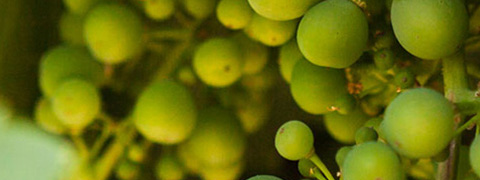
We are back with Bob Highfill once again, as he releases Part IV of his latest From the Vine Column series for The Stockton Record. Bob has focused in on our Certified Historic Lizzy James Zinfandel vines for their unique and delicious flavors, striking age and special farming requirements. Planted back in 1904, we have journeyed with Bob through every stage of Lizzy James’s 2020 growing season. In Bob’s recently published article, he joins Kyle for a look at one of the most unique years we’ve had in wine country.
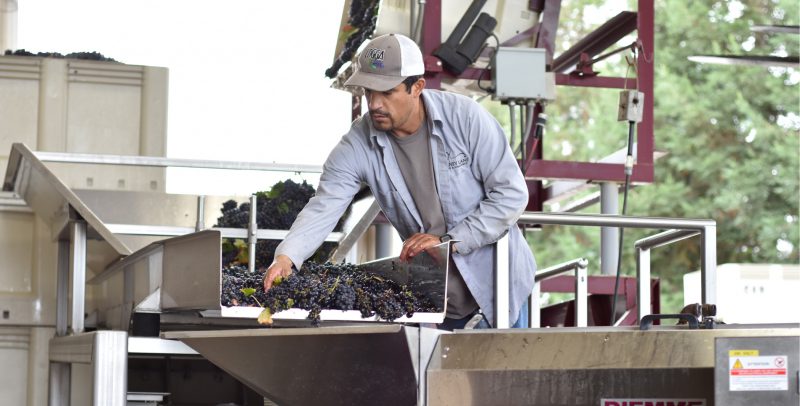
Kyle Lerner had a beaming smile on his face as bins of wine grapes tumbled onto a conveyor.
A year’s work hitting the vital targets Lerner spoke about during the growing season finally came to fruition.
Part I: Growing season series examines key stages in historic vineyard
His crew examined the clusters as they sped by, allowing those that met their standards to fall into an auger that separated fruit from stems. The grapes then were piped into fermenting tanks before the pressed juice went into oak barrels for its beauty nap inside the winery’s brand-new, expanded cellar room.
In about two years, the 2020 Harney Lane Lizzy James Old Vine Zinfandel will be released to the public and add another chapter to the venerable vineyard’s story that now covers 116 years.
“It’s the culmination of the growing season,” said Lerner, winery and vineyard owner with Mettler & Son and Harney Lane Winery. “It’s getting the fruit to where you need it to hit that moving target that I always talk about as a grower and a vintner.”
Through the year, From the Vine visited the Lizzy James Vineyard at important stages in the growing season for a series to illustrate the grower’s role in hitting those moving targets and coax nature to produce a living beverage human beings have found indispensable since the dawn of time.
Every growing season presents challenges, but 2020 had more than its fair share with a global pandemic, heat spikes and devastating wildfires in Northern California. But to think what Lizzy James has seen and been through since it was planted in 1904, it’s no wonder the 19-acre plot certified by the Historic Vineyard Society pulled through yet again.
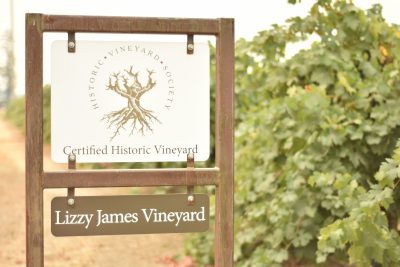
Part II: Shoot thinning helps growers hit their target
“Lizzy being 116 years old has seen a lot of things, a lot of different weather patterns, a lot of different circumstances,” said Lerner, who with his late father-in-law, George Mettler, named Lizzy James Vineyard after Jorja and Kyle Lerner’s two children, Kirsten Elizabeth and Ian James. “And those old vineyards really kind of do their own thing and it shocked me how well it managed what was thrown at it this year.”
In January, From the Vine visited Lizzy James to look at pruning, when Lerner set up the then-dormant vines for success.
“It wouldn’t surprise me if we had roots 20 feet down,” said Lerner, as he stood on Lizzy James’ sandy soil in the Mokelumne River micro-AVA of Lodi. “These are some of the least irrigated vineyards that we have. We just really try to help them out … pat them on the shoulder and ask them if they are OK.”
In April, we visited Lizzy James again when Lerner and his crew went through the vineyard and pulled excess leaves, shoulders of infant clusters and other growth that would sap the vine’s precious energy, a process called shoot thinning that balances the vines so the grapes ripen to their optimal point. At that point, the vines were in what Lerner called stretching mode — the canes were elongating and stretching exponentially.
“This year we’re running with about 60% of average rainfall,” Lerner said at the time. “Last year was a gully washer, so we’re going to be farming totally different this year than we had to last year. But we still have this target there that I’m trying to hit.
“Now that we’re warming up, they are really starting to take off,” Lerner said. “Things are going to happen quickly.”
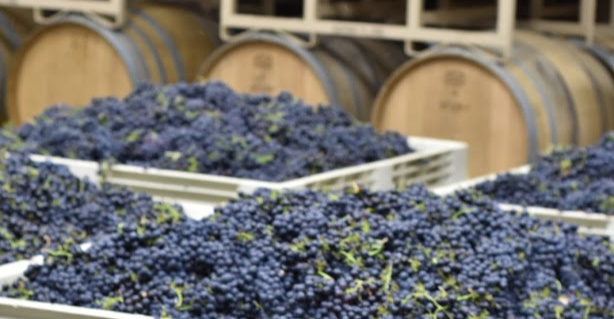
Heat spikes prompted the onset of ripening in July and we again examined Lizzy James to witness veraison when the tiny, green clusters began to grow through cell division and the fruit started to change physiologically. Cell division stopped, cell growth began, and the skin on the berries developed color and tannin.
“The color is all in the skin,” Lerner said. “That’s also where the lion’s share of the tannin structure comes from the berry itself.”
It’s sobering to remember when this series began, we had no idea there would be a global pandemic and wildfires would devastate California’s wine industry. The year 2020 long will be remembered in many ways.
“This one was a doozy, right?” Lerner said.
Back in March, “It seemed like the whole country kind of froze and fell apart,” said Lerner, “and in the process the vines don’t really care. Things kept going.”
Lerner said his focus early in the pandemic was protecting employees before turning attention again on the vineyards.
“Then the weather became very challenging for us,” Lerner said. “Not only did we have one heat spike we had a second and so it really changed how we had to do things very quickly out in the vineyards to be able to maintain the integrity of the vine and the fruit we’re growing.”
The heat also accelerated harvest about 10 days to two weeks, so Lerner’s white varieties, including chardonnay and albariño, were harvested in a course of about two weeks and the red varieties, including Zinfandel, Primitivo, Petite Sirah and Tempranillo, “screamed in right behind them.”
“So it was a very fast-paced harvest for us,” he said. “Fortunately, we had this beautiful expansion to the winery that afforded us the opportunity to manage that and we got through it very well.”
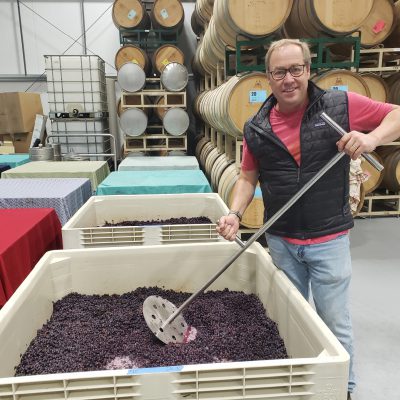
Part III: Vineyards hitting a critical stage — veraison
In July, during veraison, there was no way to know wildfires in Northern California not only would wreak havoc in Napa and Sonoma but would blanket the San Joaquin Valley with potentially damaging smoke and ash to this year’s wine grape harvest. Reports are big wineries, including Constellation, have rejected fruit up and down the state due to smoke taint.
“It’s crazy but every lot, every vineyard that we farmed, the fruit that we brought in really kind of hit that target,” Lerner said. “The flavors, the aromas we’re getting from these wines produced this year are amazing.”
Lerner said the adrenaline of harvest season has run its course and now his body is tired and his eyes are droopy after many weeks of nearly non-stop work. Lodi’s some 750 wine grape growers likely share his sentiment:
“I’m about ready for a vacation,” Lerner said.
But we’re not finished with Lizzy James. Soon, we will revisit the 2020 vintage of Harney Lane Lizzy James Old Vine Zinfandel and take readers through the racking process. Stay tuned.